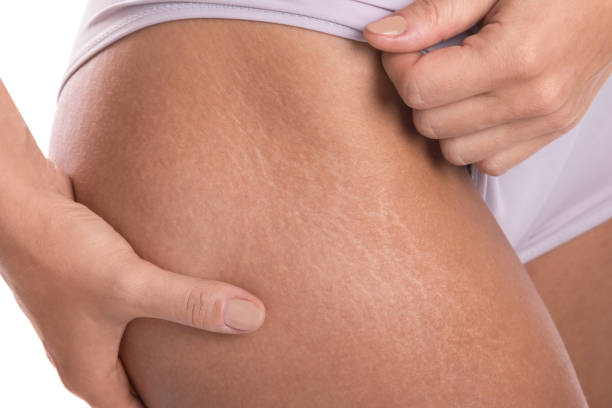Thigh stretch marks, medically known as striae distensae, are a common skin condition characterized by visible streaks or lines on the surface of the skin. These marks often appear as parallel bands of slightly indented, discolored skin, ranging in color from pink or red to purple or silver. While thigh stretch marks are generally harmless and do not pose any health risks, they can cause self-consciousness and affect one’s confidence, especially during moments of exposure, such as wearing shorts or swimwear.
Causes of Thigh Stretch Marks
Thigh stretch marks typically occur due to rapid stretching of the skin, which can result from various factors, including:
Puberty: Adolescents experiencing growth spurts may develop stretch marks on their thighs as their bodies rapidly change shape and size.
Pregnancy: Pregnant women often develop stretch marks on the thighs and other areas of the body as the skin stretches to accommodate the growing fetus.
Weight Gain: Rapid weight gain, whether from fluctuations in body weight or sudden increases in muscle mass, can lead to the formation of stretch marks on the thighs.
Genetics: Some individuals may be genetically predisposed to developing stretch marks, as certain genes can influence skin elasticity and collagen production.
Hormonal Changes: Hormonal fluctuations, such as those experienced during puberty, pregnancy, or hormonal therapy, can affect the skin’s ability to stretch and may contribute to the development of stretch marks.
Treatment and Prevention
While thigh stretch marks may fade over time and become less noticeable, several treatment options can help improve their appearance and texture:
Topical Treatments: Over-the-counter creams, lotions, and oils containing ingredients such as retinoids, hyaluronic acid, or vitamin E may help reduce the appearance of stretch marks by promoting collagen production and improving skin elasticity.
Prescription Medications: In some cases, a dermatologist may prescribe topical medications or procedures such as microdermabrasion or laser therapy to minimize the appearance of stretch marks on the thighs.
Maintaining a Healthy Lifestyle: Eating a balanced diet, staying hydrated, and engaging in regular exercise can help maintain skin health and elasticity, potentially reducing the likelihood of developing new stretch marks.
Moisturizing: Keeping the skin well-hydrated with moisturizing creams or oils can help improve its elasticity and reduce the severity of existing stretch marks.
Cosmetic Procedures: More invasive cosmetic procedures such as chemical peels, microneedling, or laser therapy may be recommended for severe or stubborn stretch marks, although multiple sessions may be required to achieve optimal results.
Conclusion
Thigh stretch marks are a common skin condition that can affect individuals of all ages and backgrounds. While they are typically harmless, their appearance may cause self-consciousness and impact one’s self-esteem. Fortunately, various treatment options are available to help minimize the appearance of stretch marks and improve the overall texture and tone of the skin.

